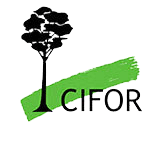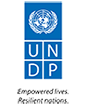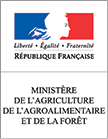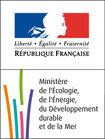- Walter Vergara at “Putting pledges into practice in Latin America”
- Seeing the big picture of land restoration
- Mamerto Valerio Bueno at “Putting pledges into practice in Latin America”
- Rafael Calderón at “Putting pledges into practice in Latin America”
- Working with initiative 20×20 to restore habitat for migratory birds throughout the Americas
- Restoring grasslands in Patagonia
- The Peru Cocoa Alliance: 28,000ha of fine and flavor cocoa under Agroforestry Systems Experiences
- New restoration commitments under initiative 20 x 20
Restoration represents an incredible opportunity to restore productivity to degraded lands, enhance livelihoods, and mitigate climate change. Initiative 20×20 is a country-led effort to bring 20 million hectares of degraded lands into the process of restoration in Latin America and the Caribbean by 2020.
The initiative has already surpassed its goal of securing commitments for 20 million hectares, with more than 10 countries pledging to restore a total of 21.4 million hectares.
In support of their efforts, 20×20 has defined country work programs and proposed a financial architecture. Within this framework, several investors and other actors have initiated restoration projects across Latin America and the Caribbean (LAC). They emply diverse approaches, including agroforestry, silvopastoral systems, assisted and natural reforestation, and avoided deforestation.
The Discussion Forum will highlight the results achieved on the ground by seven projects that were developed by countries and organizations under the auspices of the 20×20 Initiative.
Project investors have made significant contributions to complement countries’ ambitions and are aligned with announced goals. The projects will highlight the diversity of approaches for successful land restoration, as well as the unique features and benefits expected.
Land restoration has the potential to deliver multiple benefits, including higher agricultural productivity, reduced soil erosion, and increased carbon stocks – all of which contribute significantly to improved rural livelihoods and climate change mitigation.
However, other elements are likely to prove crucial to project success: incentives driving restoration, enabling conditions and challenges, and technical capacity to act on the plans and implement restoration.
The event will also explore frameworks for understanding these requirements in a new Restoration Diagnostic from the World Resources Institute (WRI) and partners.
Reforestation is an accepted approach to meeting REDD+ commitments (UNFCCC 2010). Likewise, forest landscape restoration is an important component of a broader strategy for achieving climate-smart landscapes. Landscape restoration also contributes to improving food security and the livelihoods of millions through improved agricultural sustainability.
The master of ceremonies will introduce the Initiative and report on developments since its launch GLF 2014 in Lima, including new commitments, partners, and financial developments, as well as progress of the Initiative’s other signature elements. This brief introduction (10 to 15 minutes) will be followed by poster presentations by investors or project developers with room for discussion.
Key questions addressed
- For investors (or project developers), which opportunities does the restoration of degraded land offer?
- What enabling conditions and challenges need to be addressed when starting a restoration project?
- What factors in the national land restoration agenda are important for supporting individual projects?
Background reading
Bonn Challenge On Track to Meet Land Restoration Goal by 2020
Bonn Challenge and landscape degradation
Mapping information for forest landscape restoration
Restoration Diagnostic (forthcoming)






































